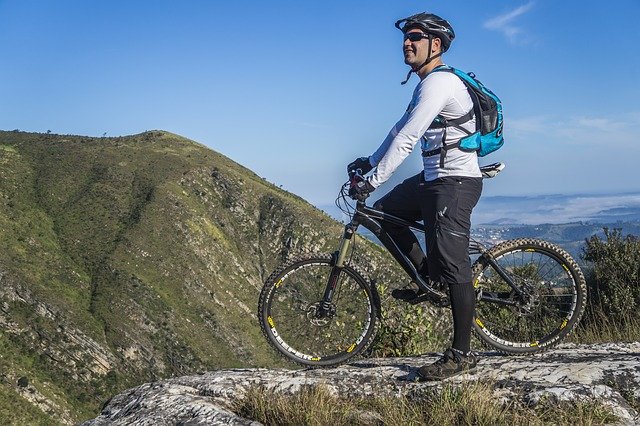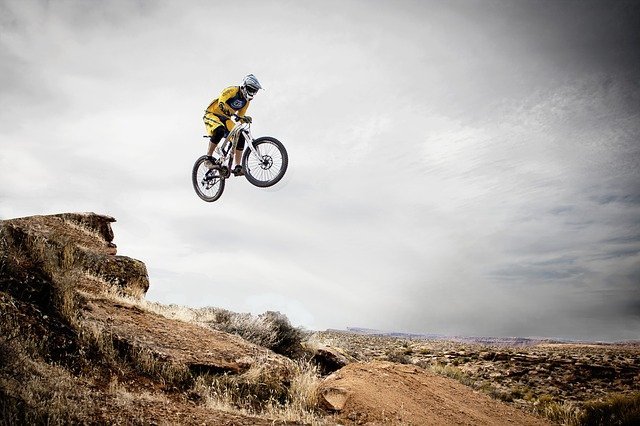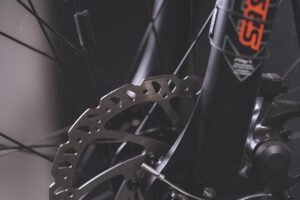Mountain Bike vs. Fat Tire Bike
Discover the distinctions between a fat tire bike and a mountain bike in this article. We’ve outlined the advantages and disadvantages of each model so you can quickly choose which one is the greatest match for you.
Over the last several years, fat tire bikes have gained popularity among the younger generation of riders. In contrast to the typical mountain bike, this style has grown more popular for off-road riding and bike-packing. Fat bikes are intended to enhance the enjoyment and originality of your bicycling excursions.
These bicycles are a wonderful option for traveling over rough terrain, through snow, or through sand. In order to make an educated decision on which of the two models is the better option for you, you must first consider what distinguishes them from one another.
Here are a few examples of comparisons.
How do mountain bikes and fat bikes differ from one another?
The breadth and size of the tires on these two vehicles are the most noticeable differences between the two. The majority of fat bikes have tires that are 3.8′ to 5.2′′ wide, while a regular mountain bike has tires that are 1.9′′ to 2.6′′ wide.
Fat bikes are constructed with wider rims than mountain bikes in order to enhance utility and increase performance, as opposed to mountain bikes. They are often equipped with rims that range in size from 55mm to 65mm. Standard mountain bikes are equipped with rims that are 30mm wide. In general, the diameter of fat bike rims ranges from 26″ to 27.7″, which is comparable to the 29″ wheels that are typical on most mountain bikes nowadays.
As a result of the large tires, fat bikes are built with more clearance than standard bikes. Seat stays, chainstays, and fork arms were designed to be extremely broad in order to provide greater room. In addition, when comparing fat bikes to mountain bikes, these modifications result in increased hub space on fat bikes. Fat bikes feature an extra-wide hub that measures 170-190mm in diameter, as opposed to the 142mm in diameter of conventional mountain bikes.
In order to accommodate the broad nature of the hub on fat bikes, the bottom bracket and crank spindle on fat bikes have been made even bigger. By doing so, the chaining is moved farther away from the frame, preventing it from running at a dangerous angle.
Most fat bikes are built using 100mm bottom brackets and 100mm spindle cranksets, which are common in the industry. Mountain bikes, on the other hand, are constructed with bottom brackets and cranksets that measure 68-73mm in diameter.
When it comes to the amount of pressure that these two vehicles operate under, there is still another distinction. Fat bikes often operate at record-low pressures of 5-14psi, while most mountain bikes run at 22-25psi, according to the manufacturer. This is mostly due to the fact that fat bikes have voluminous tires that do not readily bottom out when they come into contact with an obstruction.
Now that the distinctions between these models have been identified, it is time to concentrate on the particular designs themselves, examining the advantages and disadvantages of each.
Bikes with wide tires
Currently, fat bikes are one of the most popular bicycle alternatives available in the current period. You simply need to say the bike’s name twice to understand what it is. These are bicycles with tires that are exceptionally broad.
The ideal option for bicycling on uneven road surfaces or in adverse weather, notably snow, is a mountain bike with a suspension. Fat bikes provide superior traction and may be likened to vehicle tires in terms of traction. Here are some advantages and disadvantages to consider before purchasing a fat tire bike.
Pros
When compared to other bike kinds, these bikes are excellent at making a seamless transition across different terrains.
These bikes are most suited for dealing with bad weather such as snow, and they operate better on sand than other kinds of bikes.
Fat bikes are often subjected to a number of modifications in order to fit the fat tires. As a result, the total weight of the object rises. Because there is no weight put on your joints, this increased weight delivers a greater exercise for riders while also allowing for a faster recuperation time.
Fat tire bikes are built with improved suspension to provide more comfort and ease of riding across tough terrain.
Additionally, you may deflate the tires to increase comfort while driving on difficult terrain without damaging the rims.
There will be less upkeep. These bicycles are usually simple in design; they do not have multiple speeds or any other elaborate features. They are essentially made up of a bike frame and large tires.
These bicycles are comfortable enough to be ridden on a variety of terrains and in a variety of weather conditions.
Cons
Fat bikes are often slower than other types of bicycles due to the fact that they are heavier. When you do decide to put it into your car, be sure you utilize a bike hitch that is capable of supporting the weight of the bike.
Because they demand more effort to pedal, it will take some time for you to get used to them. They are propelled by muscle, therefore you can only go as quickly as your legs can propel you.
They are quite expensive when compared to other types of bicycles, with an average price of a thousand dollars on the market.
Bikers on Mountain Bikes A cyclist is seen riding a mountain bike at sunset.
This is a bicycle that has been specifically developed for off-road riding. Despite the fact that they have the same characteristics as other bicycles, these bicycles have been improved to increase their durability and performance on rough terrains. Some of the most typical characteristics of this bicycle are as follows:
- • A fork with suspension
- • Large knobby tires and strong wheels are essential.
- • Lower gear ratios for ascending hilly terrain
Rear suspension, strong brakes, and a straight path are all advantages.
The use of extra-wide handlebars helps riders maintain their balance and comfort when riding off-road.
To be certain before making a buy, you should examine the advantages and disadvantages of this model before committing to a purchase.
Pros
These bicycles are more adaptable when compared to other kinds of bicycles. They are constructed with medium-sized wheels and light statures, and they are equipped with characteristics that may be used to a variety of purposes. If you want to go cycle packing while also doing your gym regimen, you may utilize it for both activities simultaneously.
They are constructed with complete suspensions that average 170mm in height. Because of the increased suspension, this bike is one of the finest choices for riders who want to ride on a variety of terrain.
Mountain bikes are excellent for a variety of activities such as mud climbing, jumping, and mounting mountains. If you are unable to buy a specialist bike, they might serve as an acceptable replacement for your needs.
It is simple to navigate them across steep mountains, hills, and woods due to the lightness of their frame construction. This light build also allows the vehicle to be nimble enough to go through woodland trails and winding pathways without becoming stuck.
Cons
Because of their light and nimble construction, these motorcycles are very vulnerable to accidents. This also has the additional effect of decreasing the overall durability of these bicycles.
Compared to other types of bikes, mountain bikes are a bit heavier, forcing you to exert a little more effort when climbing.
They are fitted with a smaller 26″ wheel, which increases the rolling resistance as a result of their reduced size.
The additional suspension that has been added to these bikes has reduced the effectiveness of the pedal strokes.
Answers to the most frequently asked questions about fat bikes and mountain bikes
Bike with a lot of weight on it
What is the difference between them and mountain bikes?
The size of the tires is the most significant difference between the two vehicles. Fat bikes feature a wider tire than mountain bikes, which makes them more maneuverable.
What kinds of weather conditions do I need to ride my fat bike in?
It is theoretically possible to ride these bicycles on every terrain and in any weather condition. They are effective on mud, sand, and even snow-covered roads.
When it comes to my fat bike, should I choose clip-less or flat pedals?
This is entirely up to you to decide how to proceed. You may choose between flat pedals, which will let you to wear warmer footwear, and clip-less boots, which will keep your feet toasty in cold weather.
Mountain Bike Cyclist riding a mountain bike on a mountain trail.
What is the optimum speed to ride up a hill on a bicycle?
Depending on your pace, this varies between 3.5mph and 12.3mph on average.
What factors contribute to the wear and tear of the front and rear suspensions?
The way you ride your bike has a significant impact on how much wear and tear it sustains. Rough riding, extreme weather conditions, and the rider’s weight are all potential contributing factors.
What materials are utilized in the production of mountain bike shock absorbers?
Various manufacturers use a variety of materials, with springs and dampers being the most often used.





